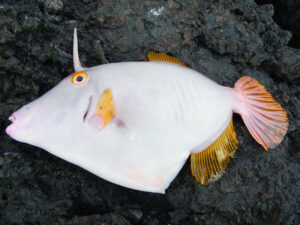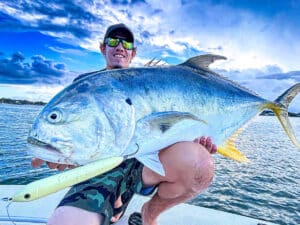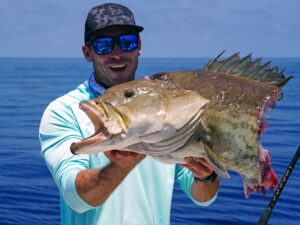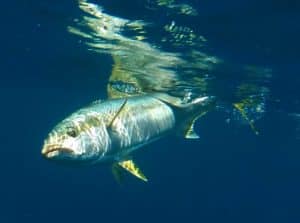Black drum fishing is booming in New Jersey this spring, as Garden State anglers experienced an invasion of the Clydesdales they haven’t seen in decades. Historically, Delaware Bay on the south side of the state is a world-class arena to target black drum. In fact, it serves as one of the world’s main breeding ground for the fish species. These “boomers” average 50 to 80 pounds, but can reach upward of 95 pounds. A myriad of smaller bay systems along the coast such as Great Bay, Barnegat Bay, and Lakes Bay also attract minor populations. However, this spring was quite a different story.
New Jersey Black Drum Fishing Spots
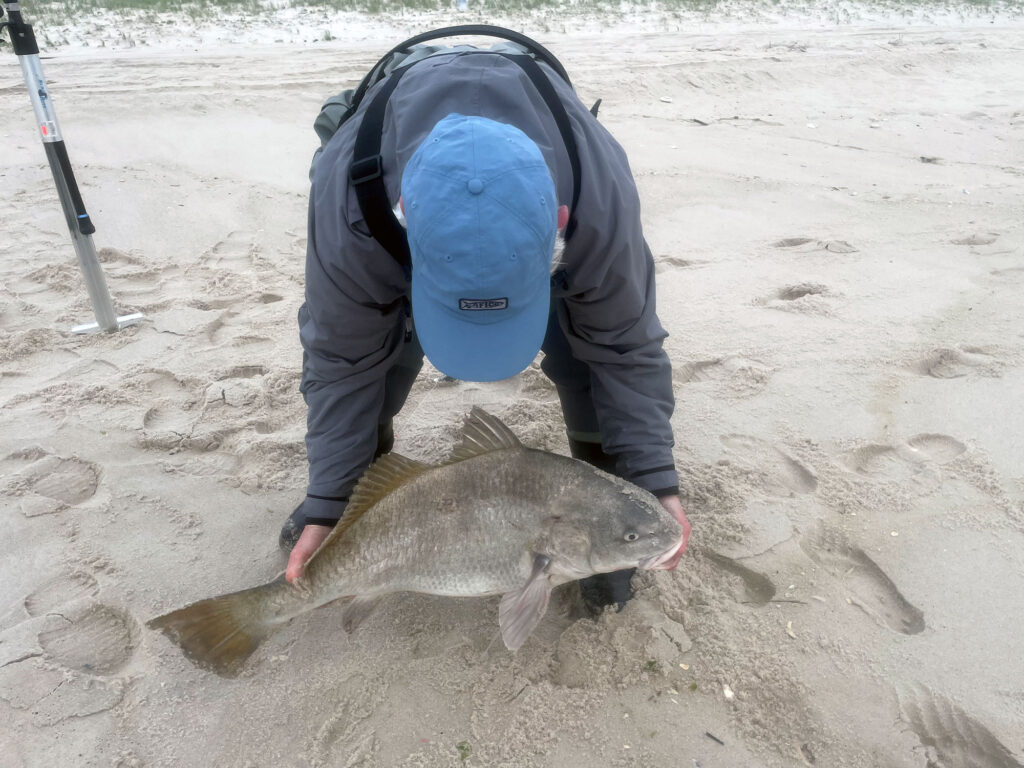
Black drum traditionally spawn around the full and new moons in April, May, and June, when the tides are super high, to allow for better chances of cross-pollination of the sperm and eggs. The full moon in April saw an unusual presence of hundreds, if not thousands, of black drum entering the relatively shallow Barnegat Bay system. The parade of drum provided incredible back-bay battles for boaters setting up on a clam chumslick, as well as dock and pier anglers tangling with drum pushing the 50- to 60-pound mark. This Barnegat Bay drum fishery was missing in recent history.
Fast forward to the May full moon and things got even weirder. The surfline from the barrier island at Island Beach State Park down through Long Beach Island was flooded with roving packs of big black drum pushing 30 to 75 pounds, offering up even more big game battles from the beach.
Black Drum Fishing Tackle
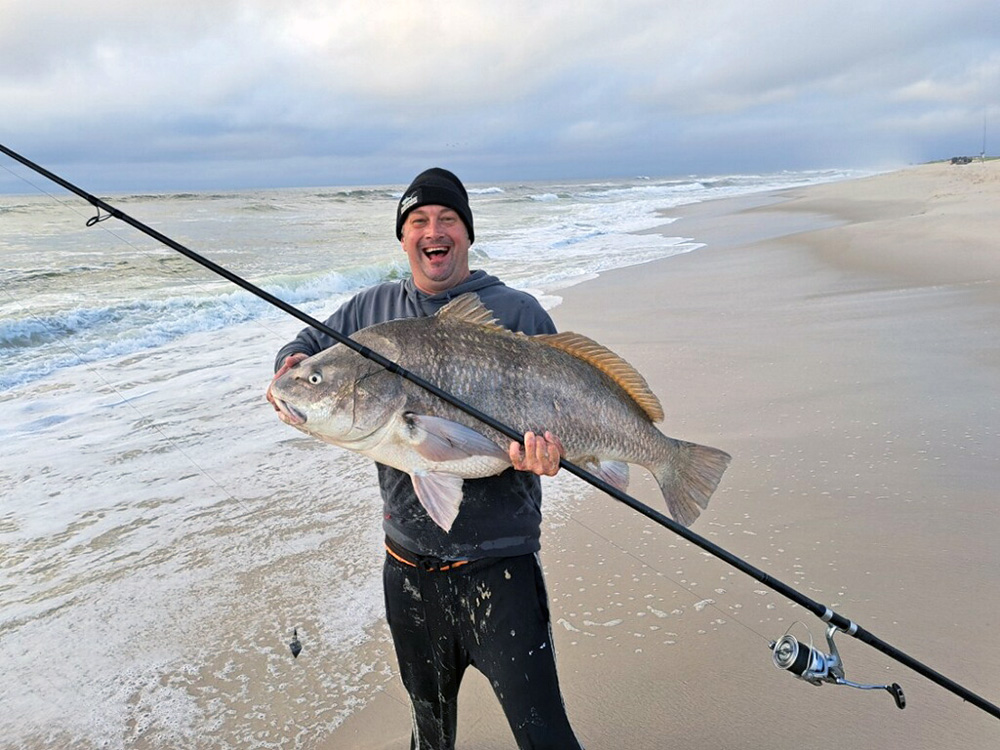
For surf fishing, rods and reels must be capable of handling these brutes. I employ a 12-foot Shimano Tiralejo rod matched with a Shimano 14000 Ultegra reel spooled with 50- to 65-pound PowerPro braided line. At the tag end, I attach a size 2 three-way swivel, a sinker clip with a 3- to 5-ounce pyramid sinker, and the last eye gets a 24-inch section of 50-pound fluorocarbon leader. For a hook, I snell on a size 10/0 Gamakatsu Big River bait hook.
In the surf, anglers are bait fishing with clams, so a super sturdy metal sand spike driven deep into the beach is needed to prevent your rod and reel setup from being stolen. Baits are simple. A whole fresh gob of shucked clam is pierced on the hook three or four times, then cast out into a deep cut or slough where the drum are feeding.
Best Tactics for Black Drum
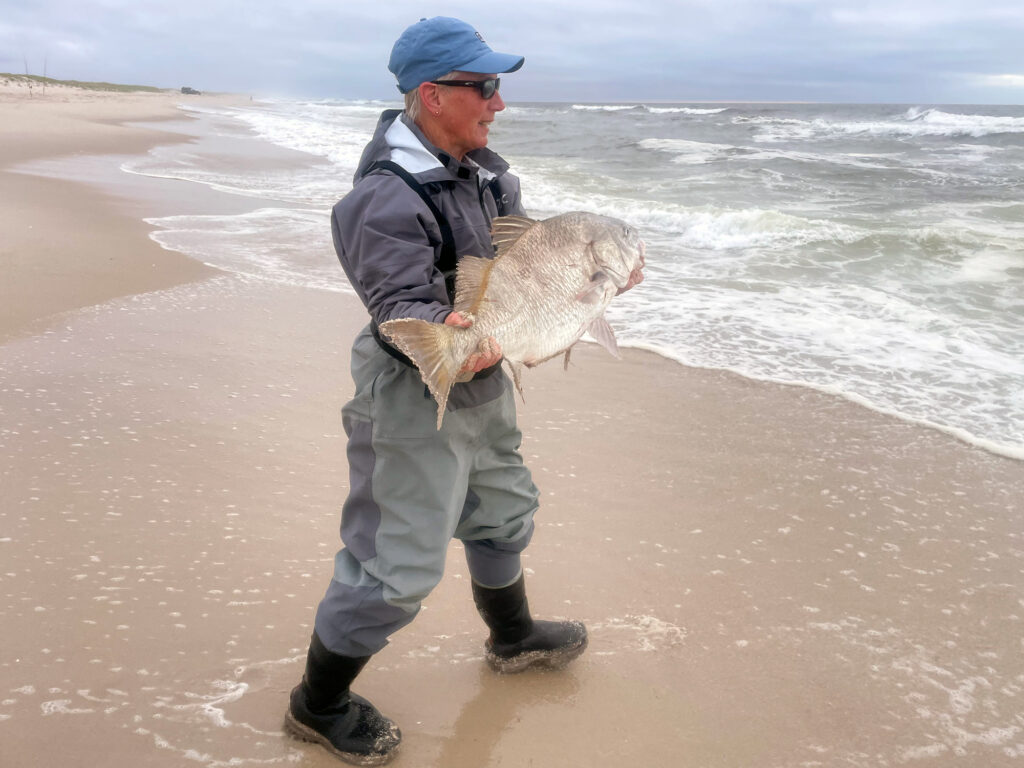
The key to success is timing the tides. Your best bets are to fish around the high tides, generally two hours before and two hours after the dead high tide. Deep waters allow for the barrel-chested warriors to enter close to the surf line. Light to moderate 5 to 15 knot easterly onshore winds are preferred as they push water and schools of drum up onto the beaches. Add some north or west into the wind direction and achieve similar success. Main spots where drum feed are deeper holes, but also the inside and outside of the sandbars. The drum are searching for clams and crabs getting washed over the bars.
Once hooked to a big drum, hold on tight. Let them dictate the terms of the fight as the initial run is long and sustained. Surprisingly, they put up quite a tussle as they use their big broom-tails to power away from the shoreline. Expect them to surface and boil up trying to shake the hook. The end game is critical in the undertow of the surf. Don’t freak out and pull on the line hard, as the drum will use their weight on the receding waves to try and snap your line. Time the wave patterns and reel in when they get pushed up onto the sand with a crashing wave, then run down and grab the drum by the mouth or gill plate to land it effectively.

